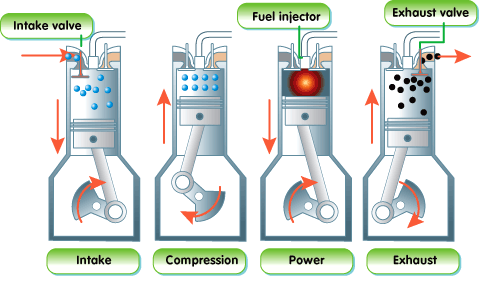

More recently, rotary engines have been used to power unmanned aerial vehicles (UAV), commonly known as a drones. A well-known example of a rotary engine is the Wankel engine, which has seen some commercial success in a variety of applications-first by the German automaker NSU Motorenwerke and then, most famously, by Mazda. Most rotary engines are spark-ignited, but diesel versions were also attempted. Rotary engines, which use an eccentrically mounted rotor to convert pressure into rotary motion, offer high power/weight and power/size ratios that make them attractive to applications where weight and size are critical.An example of the ongoing development of two-stroke engine technology can be found in the opposed piston type of the engine.

Due to their light weight, they are also used in handheld, gasoline utility equipment such as chainsaws where a high-power density is possible. For large marine engines, the ability to combine long stroke/bore ratios with low BMEP and low engine speed offers unparalleled efficiency and durability.

Yet, alternative engine designs can offer some potential advantages and continue to be explored. Internal combustion engines consisting of a piston reciprocating in a cylinder and connected by a connecting rod to a crankshaft-most commonly four-stroke diesel and spark-ignited engines-have become entrenched for many applications for at least a century. These alternative designs include rotary engines, such as the Wankel engine, two-stroke engines, as well as six-stroke and split-cycle engines. Abstract: While the four stroke diesel and gasoline engines have been firmly entrenched for most applications, alternative combustion engine concept have been pursued that can offer improved efficiency, power density, and other potential advantages.


 0 kommentar(er)
0 kommentar(er)
